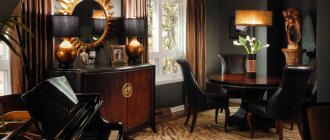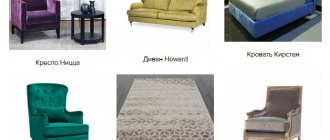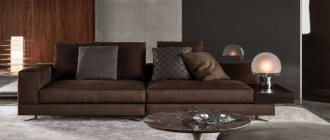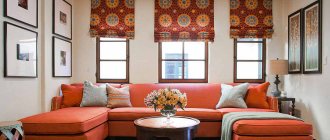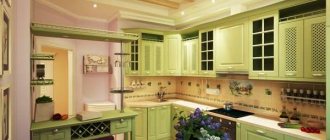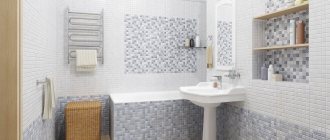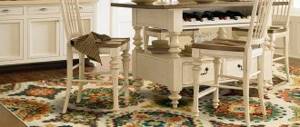The choice of color in the design of a living or working space is an important point. After all, each shade has its own effect on the psychological and emotional state of a person. Also, some tones allow you to visually expand (narrow) the room and visually adjust it. It is thanks to such manipulations that you can achieve the most optimal option for interior decoration.
Neutral colors in a room of any size and lighting are a great option. Especially if you need to make the basis for any accents in the room. The range of palettes of this kind of tones: from charcoal to cream. They will help fill the room with sophistication and charm as much as possible, making it luxurious and solid. You need to learn how to use neutral colors in the interior. For what? So that the space does not seem boring and banal. If you add original elements and correctly take advantage of all the advantages of neutral colors, the room will always look fresh and its interior will always be interesting.
Gray in the interior
Currently popular colors are white and gray. A light color will always make good use of the available space. The gray-brown tone is quite soft, pleasant to perceive, and delicate. It will easily become the basis for any room. If you want to use a slightly different shade, for example, smoky, then you don’t have to deny yourself the pleasure! This gray can dilute the unpleasant feelings in the room, add romance and tranquility, which cannot be said about other neutral colors.
White color in the interior
A simple white shade is also popular. He is able to calm and give warmth. No need to use pure white. Too much of it can seem cold. Most often, when choosing wallpaper of a neutral color, the snow-white version is used. If you use a dark shade as a background, then this tone will become an excellent accent. It can also be used to dominate the design of a room that receives little natural light. An excellent solution would be another shade of white. Which one? Beige color! White neutral can seem too serious, making the room too difficult to perceive. At the same time, beige can easily “merge” into the interior. It combines well with other colors.
Neutral colors in the interior - How to make it yourself?
They are not represented on the color wheel, but can play an important role in interior design, acting as a backdrop for bright color accents made from pure colors. Neutral colors are divided into true and conditionally neutral. These include black, gray and white, and cream (ivory), beige and brown are considered neutral. In addition, these include lightened colors of the color wheel and various neutral white tones. Many neutral colors are actually combinations of two or more colors, like taupes, taupes, and taupes. They are neither warm nor cold. These are the colors of relaxation and tranquility. Their main advantage is their unlimited versatility, so they are often used to expand the color palette of the interior, since they are an excellent, non-irritating and non-tiring color background. They do not attract attention and blend harmoniously with both warm and cool colors.
Let's look at the features of true neutral colors - white, black and gray. They can be used in any interior. These colors not only combine well with each other, but also with brown. Gray is an excellent base for creating a variety of accents of red, yellow and orange, giving them greater brightness and richness. It can visually expand the space and is able to emphasize the texture and dignity of the objects used in the interior. White color can either be combined with any other color or act as a background, looking good on the walls and highlighting dark wooden furniture. It is mainly used in the form of many shades (there are about 40 types), which differ from each other only by slight changes in tone and are perfectly combined with each other. They bring both comfort and warmth, as well as coolness and lightness, to the interior.
Now let's pay attention to conditionally neutral colors. Ivory and cream tones create a softer effect than white. And, although they are lost against the background of other colors, these shades will ultimately add a touch of greater sophistication to the decoration of the room. Brown is more informal than black or red. It is perceived as the most natural. Brown and beige colors are very common in nature and therefore their use in the interior is very calming and inspires confidence. These colors are a combination of several colors. They can be “warmed” by adding red or terracotta, or “cooled” by adding greenery. Using beige in the interior is the easiest way to choose a background. Therefore, if you don’t know what color to choose for the background of your interior and are afraid to make a mistake, use beige! It goes well with almost all the colors in the palette. A dark gray-brown color gives an excellent result in the interiors of large rooms.
Interiors decorated in pastel tones of neutral colors include a range of closely related yet muted shades that work well together and evoke a feeling of calm. They are shown in the table along with their codes.
| Color | R | G | B | HEX | |
| A | 183 | 166 | 173 | #B 7A6AD | |
| B | 200 | 186 | 192 | #C8CAC0 | |
| C | 211 | 201 | 206 | #D3C9CE | |
| D | 190 | 178 | 167 | #BEB2A7 | |
| E | 209 | 198 | 191 | #D1C6BF | |
| F | 219 | 215 | 204 | #DBD7CC | |
| G | 202 | 170 | 136 | #CAB388 | |
| H | 213 | 196 | 161 | #D5C4A1 | |
| I | 224 | 212 | 187 | #E0D4BB | |
| J | 181 | 178 | 146 | #B5B292 | |
| K | 200 | 197 | 172 | #C8C5AC | |
| L | 213 | 211 | 191 | #D5D3BF | |
| M | 168 | 173 | 180 | #A8ADB4 | |
| N | 195 | 200 | 205 | #C3C8CD | |
| O | 210 | 214 | 217 | #D2D6D9 | |
This table shows their harmonious combinations in columns in a palette of shades of one group.
| A | D | G | J | M |
| B | E | H | K | N |
| C | F | I | L | O |
Table of combinations of two neutral shades from different groups.
| H | D | B | F | G | K | J | C |
| M | E | I | E | A | N | K | O |
Tables of combinations of three neutral shades from different groups.
| O | N | M | L | K | J | F | D | E | G | I | H |
| C | A | B | N | A | G | I | G | K | O | A | E |
Table of combinations of four neutral shades from different groups.
| B | A | J | L | G | K | J | F | J | C | B | A | B | E | J | K |
| M | N | A | C | H | M | G | L | J | N | M | L | F | D | K | G |
Light neutral shades of pastel colors, similar to white, provide an effective contrast to dark or bright furniture. Therefore, in order to attract attention to the new furniture in the interior of the room, the design of the kitchen, living room or bedroom in neutral colors will be the best background option for realizing this desire. In addition, a neutral color in the interior is a suitable background for bright decor, almost any color (red, yellow, orange, blue). This makes it much easier to change contrasting accents in a neutral room, since you don’t need to change anything other than individual decorative elements.
Sincerely, Gariy Makhov
01/28/2014 at 18:51
Chocolate shades
Chocolate shade often does a similar job to black. However, it is not that dark. And its scope of application in styles is much greater. This representative of the palette may well act as an accent. It is often used in those rooms where there is a shift in several styles. Not all neutral colors can fit perfectly into such interiors.
Chocolate will be necessary for those rooms that always look respectable and official. For example, this is exactly what an office should be like. A similar color with shades of brown will never get boring, but, on the contrary, will create the right working atmosphere. For conservative people, a chocolate shade will come in handy in the bedroom. As a rule, it is used by those who never like and do not accept disorder and excessive fuss. In modern designs, this color is used only with the addition of contrasts (black, white), otherwise it will not be able to create the desired look and atmosphere.
Photos of how to combine colors in the interior
Look here: Interior ideas - modern styles and original combinations in interior design (130 photo ideas)
Did you like the article?
2+
2
Black color
It is used in non-residential premises, for example, a bathroom. This is because it is not a traditional choice but is generally used as a luxury item. This is what distinguishes other neutral colors from it. The main thing is to correctly create the interior and proportionally distribute the shade range. You shouldn't use a lot of black. It will reduce the room to an unprecedented size, making it tiny.
There should also be sufficient lighting. Moreover, whether it is artificial or natural does not play a role here. Most often, owners prefer to lay black tiles. It doesn't catch the eye that much, but it creates the right accent. It is best to make black dominant in rooms where there is one large window. Lamps can be installed near mirror surfaces. If you don’t want to add black to your interior, but still want to make an accent with this shade, you can use charcoal. It works exactly the same, but looks much softer.
The benefits of neutral colors
This palette has many advantages:
- It is quite easy to use such tones to accent or highlight any elements.
- Neutral colors don't tend to get boring.
- They are universal. They can be used in various styles. These colors will easily fit into the interior.
- Neutral shades create a calm atmosphere in the room. As a rule, elements that are too complex and difficult to understand are never used with them.
Color combinations of neutral colors in the interior
By combining neutral tones with each other, you can get a stylish modern interior. But over time, it will most likely seem boring if you don’t use bright accents. Since white, black and gray are considered basic, they can be complemented with absolutely any bright furniture and eye-catching accessories.
bright interior accents in neutral colors
With pastel colors, neutral tones create a calm atmosphere conducive to relaxation. But such an interior looks undynamic. You can give it liveliness and activity with the help of one or more bright or dark accents.
Bright, acidic colors look even more impressive against a neutral background. This combination will decorate the premises in a modern style.
And final advice: you should not decorate the room in only one neutral color, otherwise such a room will cause a drop in tone and energy.
Using a neutral base, you can create an interior to suit your taste in any style, and bright color spots in decor, accessories and furniture will highlight the owners’ mood and character.
Irina Leon ed. Valentina Chaiko.
- < How to choose colors for your office?
- Psychology of color in the interior >
The best combinations in the interior
By mixing other colors with neutral shades, you can create the perfect space you want to be in all the time. Light colors combined with green will turn any room into a relaxation room. A combination of charcoal and white is suitable for the bedroom. This duet looks soft and relaxed. And this is exactly what you need for relaxation and privacy after a busy day. Orange and red also pair easily with beige and other light neutrals. You can also use them to decorate your bedroom.
In the kitchen, black, white and gray will do a great job of creating the right atmosphere. A light color is especially important if the space in that room is very small. In industrial design, as a rule, darker shades predominate, while light shades diffuse the atmosphere by being used in a targeted manner. It turns out that they act the same way, allowing you to “suppress” each other’s negative properties.
Why do we need neutral colors?
The group of neutrals consists of the achromatic range (black, white and all shades of gray), dark blue and all beige-brown tones. More complex shades of dark blue, brown and beige, in which there is an admixture of other colors, marengo or terracotta, for example, are often also conventionally called neutral. But in fairness, it should be noted that they cope noticeably worse with the function of serving as a background. Although such shades can be very useful.
Neutral colors are needed to create a rational basic wardrobe. All girls periodically face the problem of “nothing to wear,” and the reason lies in an excess of active, catchy, memorable things with a complete lack of basic ones. The disadvantage of a wardrobe compiled in this way is that each blouse in it is combined with 1-2 things. If you are interested in stylish experiments and searching for your own non-standard solutions, then it is useful to have clothes in basic colors, although boring in appearance, but suitable for everything without exception!
The secret is simple: things that are bright in color and design are important and necessary, but it is clothes in neutral colors that provide wardrobe variability and the ability to create diverse looks with them.
original top with dark blue trousers
you can combine an orange blouse and golden accessories with beige clothes for work
